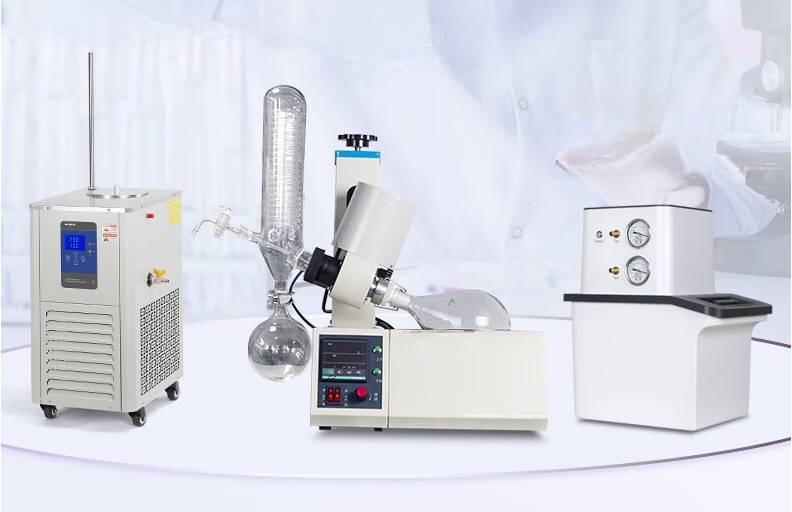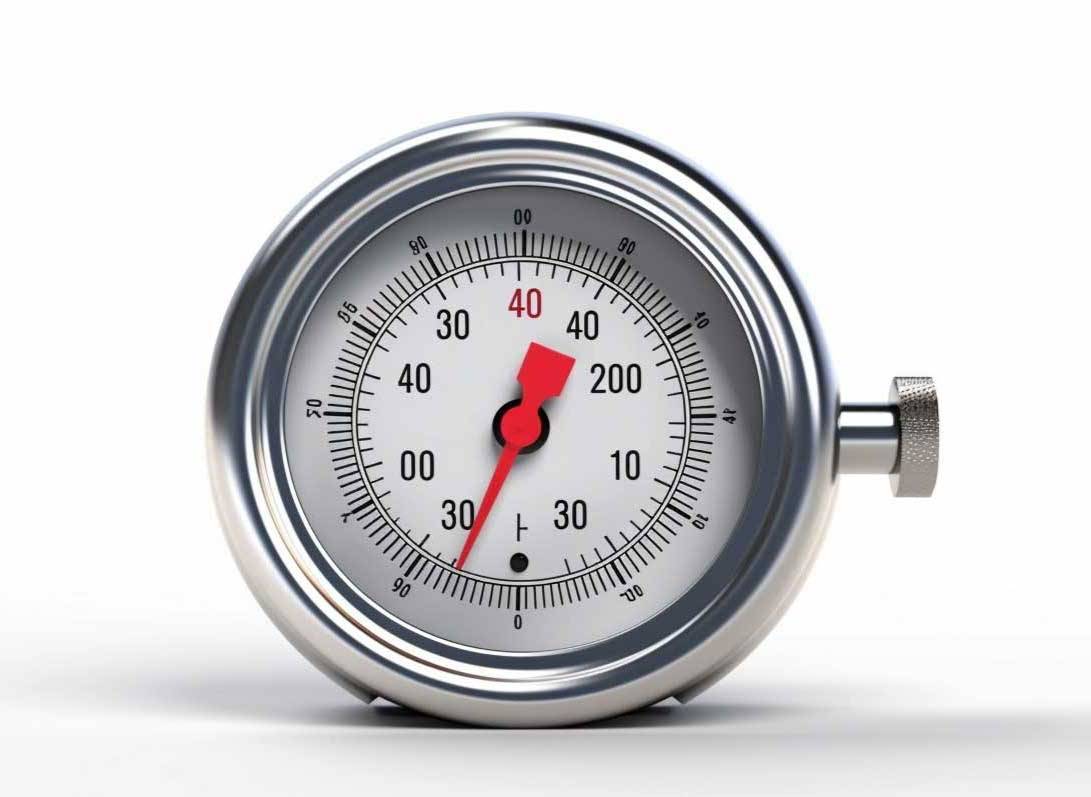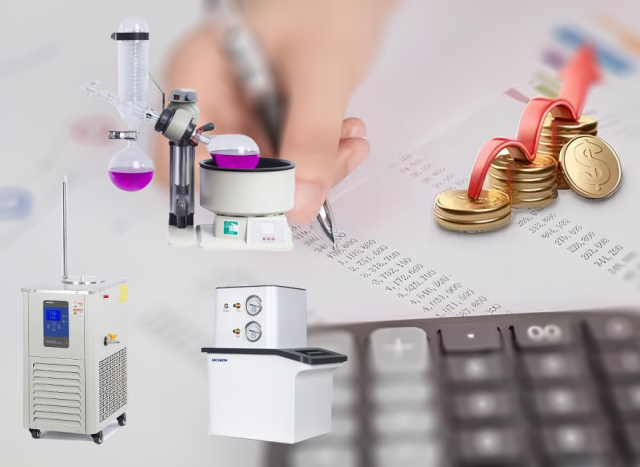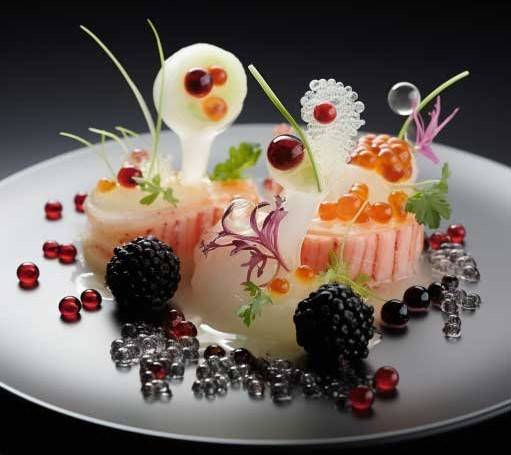Introduction
A rotary evaporator, also known as a rotavapor, is a laboratory equipment used for distillation, evaporation, and separation of solvents. It consists of a motor that rotates the flask containing the solution, a condenser, and a vacuum system that lowers the boiling point of the solvent. Rotary evaporators are commonly used in scientific research, quality control, and production processes. They offer several benefits, including a high level of control over the distillation process, fast evaporation rates, and the ability to recover solvents. When choosing a rotary evaporator, it's important to consider factors such as sample size and type, heat sensitivity of samples, safety features, and environmental considerations.
Table of Contents
- Introduction
- Benefits of using a rotary evaporator
- Factors to Consider When Choosing a Rotavapor
- Sample Size and Type
- Heat Sensitivity of Samples
- Safety Features
- Environmental considerations
- Types of Rotary Evaporators
- Chiller Selection for Rotary Evaporation
- Using one chiller for multiple rotary evaporators
- Conclusion
Benefits of using a rotary evaporator
A rotary evaporator, also known as a rotavapor, is an essential piece of laboratory equipment used for the efficient removal of solvents from samples. Choosing the best rotary evaporator for your budget can be challenging, considering the wide range of models available in the market. Here are some of the benefits of using a rotary evaporator:
Lower Boiling Temperatures
A rotary evaporator is used together with a vacuum system to reduce the pressure of the system. This means that the separation of solvents and other compounds can be achieved at lower temperatures than usual. The use of water baths also prevents the direct heating of the glass apparatus, ensuring that the apparatus stays in good shape for longer as they are exposed to lower temperatures.
Faster Evaporation of Solvent
The process of separation in rotary evaporators involves two main forces: the centripetal force and friction. This allows the mixture to form a film on the inner surface of the flask, creating a larger surface area for heating.
Fewer Operations
A rotary evaporator consists of a built-in lifting and falling motor. This part enables the automatic raising of the rotary bottle to a position just above the water bath for the rotation process. This means that a technician is less involved in the holding of the apparatus, which makes work easier for them.
Gentle and Precise Cooking of Fresh Food
Rotary evaporator cooking allows for the gentle and precise cooking of fresh food while maintaining the taste, aroma, and nutritional value of the food. The low temperatures used in the process make it safe and beneficial for human consumption.
Visual Monitoring and Adjustment
A rotary evaporator consists of transparent glass hardware, allowing for easy cooking visualization. This allows the user to visually see the completion of the evaporation, eliminating the guesswork.
100% Component Recovery
A rotary evaporator also consists of totally sealed glass hardware, ensuring that no wastage or leakage of the mixture or distillate occurs. This ensures 100% component recovery, reducing waste and cost in the laboratory.
Overall, investing in the best rotary evaporator within your budget can significantly improve the efficiency and productivity of your laboratory, ultimately leading to better research outcomes.
Factors to Consider When Choosing a Rotavapor
Choosing the best rotary evaporator (rotavapor) for your laboratory requires careful consideration of several factors. Below are some of the essential factors to consider when selecting a rotavapor for your budget.
Budget
One of the most important factors to consider when selecting a rotavapor is your budget. The price of rotary evaporators can range from a few hundred to several thousand dollars. Determine how much you are willing to spend before starting your search.

Size and Capacity
Another significant factor to consider is the size and capacity of the rotavapor. The size should be compatible with your laboratory space, and the capacity should be based on your specific needs and preferences.
Type of Condenser
The type of condenser, such as glass or stainless steel, is also an important factor to consider when choosing a rotavapor. The condenser should be compatible with the type of sample you are working with. For example, HP condensers are well suited to cannabis applications, while S condensers are ideal for extractions under reflux.
Level of Automation
The level of automation is also a crucial factor to consider when selecting a rotavapor. Some rotavapors come with advanced features like digital displays and programmable settings, while others are more basic and require manual operation.
Type of Sample
The type of sample you are working with is another important factor to consider when choosing a rotavapor. Some rotavapors are better suited for certain types of solvents or materials. For example, a reflux condenser is beneficial to those performing recrystallization.
Chillers
To calculate the necessary cooling capacity and the appropriate chiller, you’ll need to consider three factors related to a particular solvent - vapor temperature, desired evaporation rate, and condenser temperature. Chillers for rotary evaporators come in a variety of sizes, and choosing the right one is essential to avoid inadequate cooling that could result in solvent vapor exiting the rotary evaporator into the vacuum pump, potentially damaging the pump in the process.
Accessories
There are various specialized accessories to assist with challenges that arise during the evaporation process. For example, if you experience foaming, you might consider a foam sensor. If you are working with solid samples, you could consider a vapor duct with frit.
Choosing the best rotary evaporator for your laboratory requires careful consideration of several factors such as budget, size and capacity, type of condenser, level of automation, type of sample, chillers, and accessories. By considering these factors, you can select the best rotavapor that suits your specific needs and preferences.
Sample Size and Type
When it comes to choosing the best rotary evaporator for your laboratory, one of the most important factors to consider is the sample size and type. Here are some key points to keep in mind:
Sample Size
The size of your sample will dictate the size of the flask you need. It is important to choose a flask that can accommodate approximately twice the starting volume of your solvent. This will ensure that you have enough space for your sample to evaporate without overflowing.
If you are dealing with large volumes of samples, then a rotavapor with a larger flask capacity would be ideal. On the other hand, if you are working with small volumes, then a rotavapor with a smaller flask capacity would suffice. Evaporation performance is directly proportional to the size of the flask you are using. Therefore, a larger flask size may be useful if your application requires high-performance evaporation.
Sample Type
The type of sample can also determine the type of rotavapor that you need. If you are working with flammable or explosive samples, then you need to consider a rotavapor with explosion-proof features. This will ensure that the equipment can handle the potentially hazardous samples safely.
Furthermore, if you are working with samples that require gentle evaporation, then a rotavapor with a high vacuum system would be ideal. This will allow you to evaporate the solvent at a lower temperature, which will prevent any thermal damage to your sample. On the other hand, if your samples are heat-sensitive, then you need to consider a rotary evaporator with refrigeration built into it. This will give you the temperature control that is recommended to maintain the viability of heat-labile samples.
In summary, it is important to consider the sample size and type before choosing a rotavapor that best fits your budget. By keeping these factors in mind, you can ensure that you select the most appropriate equipment for your laboratory needs.
Heat Sensitivity of Samples
When selecting a rotary evaporator (rotavapor) for your lab, it is important to consider the heat sensitivity of your samples. Rotary evaporators use heat to evaporate solvents from your samples, and if your samples are sensitive to high temperatures, you'll need to choose a rotavapor with precise temperature control and low heating rates.
Precise Temperature Control
Look for models with digital temperature displays and programmable controls to ensure you can accurately set and monitor your sample temperature throughout the evaporation process. These features will help you maintain a consistent and controlled temperature environment and minimize the risk of heat damage to your samples.
Low Heating Rates
Additionally, consider purchasing a rotavapor with a cold trap or other cooling mechanism to reduce the risk of heat damage to your samples. While these features may come at a higher cost, investing in a rotavapor that can safely and efficiently handle your heat-sensitive samples will ultimately save you time, money, and potential sample loss in the long run.
Other Factors to Consider
In addition to heat sensitivity, there are other factors to consider when choosing a rotavapor, such as the size of your lab and your budget. It is important to choose a rotavapor that is the right size for your lab and can handle the volume of samples you work with regularly.
Conclusion
Overall, selecting the right rotavapor for your lab is crucial for the efficient and effective separation of solvents from your samples. By considering the heat sensitivity of your samples, as well as other factors such as size and budget, you can choose a rotavapor that meets your specific needs and requirements.
Safety Features
When it comes to choosing a rotary evaporator, safety should always be a top priority. Here are some important safety features to consider when selecting a rotavapor for your laboratory:
Automatic Shut-off Function
An automatic shut-off function is an important safety feature that prevents accidents from occurring. It is designed to shut off the machine when the temperature or pressure exceeds the set limit, which can prevent overheating and explosions.
Safety Shield
Another important safety feature to consider is a safety shield. This feature protects the user from splashes or spills that can occur during the distillation process. By using a safety shield, you can minimize the risk of contamination, injuries, or inaccurate test results.
Ventilation System
A good ventilation system is essential to remove toxic fumes from the air. It is important to choose a rotary evaporator that comes with a ventilation system that can prevent inhalation of harmful vapors that can cause respiratory problems.
High-quality Materials
It is important to choose a rotary evaporator that is made from high-quality materials and has been tested for safety standards. When selecting a rotavapor, make sure to choose a model that is made from durable materials that can withstand chemical exposure and extreme temperatures.
Testing for Safety Standards
Lastly, ensure that your rotary evaporator has been tested for safety standards. Look for models that have been tested by independent laboratories to ensure that they meet all safety requirements. While safety features might add to the cost of the rotary evaporator, they are crucial investments that can prevent accidents and save lives.
By prioritizing safety, you can ensure that your laboratory equipment is reliable and can provide accurate results without compromising the well-being of the users and the environment.
Environmental considerations
When choosing a rotary evaporator for your laboratory, it's important to consider the environmental impact of your choice alongside your budget. Here are some key factors to consider:
Energy efficiency
Look for models that have been designed to use less energy. This not only helps reduce your carbon footprint but can also save you money on your energy bills.
Recyclable and biodegradable materials
Consider the materials used in the construction of the rotavapor. Opt for models made with materials that are recyclable or biodegradable. This will help reduce waste and ensure your lab is more environmentally friendly.
Refurbished or remanufactured models
Some manufacturers offer refurbished or remanufactured models that can reduce waste and save you money. These models are typically rebuilt to the same high standards as new models, so you can be confident that they will perform just as well.
Lifespan of the rotavapor
Investing in a high-quality model that is built to last can help reduce the need for frequent replacements. This, in turn, reduces waste and saves money in the long run.
Proper disposal of used equipment
When it's time to dispose of your rotavapor, make sure you do so in an environmentally responsible way. Many manufacturers offer recycling programs or can help you dispose of your equipment safely.
By considering these environmental factors alongside your budget, you can choose a rotavapor that not only meets your laboratory's needs but also aligns with your values as a responsible consumer.
Types of Rotary Evaporators
Rotary evaporators are essential laboratory equipment used to remove solvents from mixtures of reactions, and can handle volumes of up to 50 liters. There are several types of rotary evaporators available, each with its own advantages and limitations. In this section, we will discuss the common types of rotary evaporators and their features.

Vertical and Diagonal Condenser Rotary Evaporators
The vertical and diagonal condenser rotary evaporators are the most common types of rotary evaporators available in the market. These types are ideal for low to medium volume samples. The vertical condenser is designed to work with small to medium volumes and is ideal for samples that require high boiling points. On the other hand, the diagonal condenser is ideal for low boiling point solvents. Both types have their condensers placed at the top of the flask, which allows for easy maintenance and cleaning.
Cold-Trap or Coil-Condenser Rotary Evaporators
The cold-trap or coil-condenser rotary evaporators are designed for higher volumes and are better suited for samples that require a lower temperature. These types are equipped with a secondary cooling system, which allows for efficient cooling of the solvent vapor. The cold-trap rotary evaporator is ideal for samples that need to be chilled below room temperature, while the coil-condenser rotary evaporator is ideal for samples that require cooling to room temperature.
Rotary Film Evaporators
Rotary film evaporators are suitable for materials that require reduced heat and pressure when separating or mixing. They are mainly utilized in small scale industries and are equipped with mechanical parts to ensure they operate under low heat and pressure. They have an automatic bath lifting feature that controls the temperature needed. These evaporators are equipped with digital displays to ensure close monitoring of the time and temperatures.
Rotary Evaporators with Motor Lift
The rotary evaporators with motor lift are equipped with a manual motor lift-up which enables you to control the process in case of a power outage. They come with different flask capacities which range from 2 liters to 50 or more. The locking position on this evaporator is adjustable to different directions, especially if one is using different sizes of the flasks, or if one needs to move the vacuum seal from the contact position. You can quickly move the motor with switch operation.
Choosing the Right Type of Rotary Evaporator
When selecting the right type of rotary evaporator for your laboratory needs, it's essential to consider your budget and the specific requirements of your laboratory work. The type of solvent being used is also important, as some rotary evaporators may not be compatible with certain solvents. It's also important to consider the size and quality of the evaporating flask, as well as the speed and accuracy of the heating and cooling systems.
By carefully considering these factors, you can choose the best rotary evaporator for your budget and laboratory needs, ensuring efficient and accurate results in your scientific work.
Chiller Selection for Rotary Evaporation
When it comes to rotary evaporation, choosing the right chiller is crucial for efficient and effective results. A chiller is necessary to provide cooling for the condenser of the rotavapor, which is essential to the evaporation process. Here are some factors to consider when selecting the best chiller for your rotary evaporator.
Types of Chillers
There are two main types of chillers: recirculating chillers and immersion chillers. Recirculating chillers are more expensive but offer better temperature control and stability. Immersion chillers are less expensive but require more maintenance and may not provide as consistent cooling.
Chiller Size
It's important to consider the size of the chiller as well, as it should be able to handle the volume of solvent being evaporated. Chillers for rotary evaporators must have a high cooling capacity because of the high temperature of the solvent vapor. Recirculating chillers generally have the most cooling power at 20°C or higher. If the rotary evaporator will distill a range of solvents, it is best to size the chiller for the solvent requiring the lowest condenser temperature.
Temperature Control
Temperature control is crucial in the operation of the rotary evaporator. The rotary evaporator’s heating bath warms the solution to effect solvent vaporization. The vapors condense on the chilled condenser coils completing the contained distillation process. The most efficient conditions employ what is known as the 20-degree rule. The 20-degree rule suggests having a 20°C difference between the bath temperature, vapor temperature, and condenser temperature.
Pump Pressure and Flow Rate
Another important factor to consider is the maximum pressure of your chiller pump. When subjected to too high a pressure, often in the range of 10–15 psi, the risk of the condenser breaking is increased. Positive displacement and turbine pumps tend to have higher output pressures, so using them may increase the risk of your glassware breaking. Additionally, pump flow rate is important as it affects the overall efficiency of the rotary evaporation process.
Chiller Maintenance
Lastly, it's important to consider chiller maintenance. Chillers require regular maintenance to ensure their proper function, and it's important to factor in the cost and time required for maintenance when selecting a chiller for your rotary evaporator.
By carefully considering all of these factors and selecting the best chiller for your needs and budget, you can ensure efficient and effective rotary evaporation for your laboratory work.
Using one chiller for multiple rotary evaporators
One solution to maximize your budget when selecting a rotary evaporator is to use one chiller for multiple rotary evaporators. This approach can save money on equipment costs and reduce energy consumption. Here are some steps to consider when using one chiller for multiple rotary evaporators:
Step 1: Determine the size of your lab
Before deciding to use one chiller for multiple rotary evaporators, you should consider the size of your lab. If you have a small lab, it may not be practical to use multiple rotary evaporators, as space may be limited. On the other hand, if you have a large lab, using multiple rotary evaporators may be necessary to meet your research needs.
Step 2: Assess your research needs
For labs with heavy usage of rotary evaporators, it may be more efficient to use multiple units rather than sharing one. However, for labs that have lower usage, using one chiller for multiple rotary evaporators may be a better option. It is important to assess your research needs and usage to determine the best approach.
Step 3: Check the compatibility of the rotary evaporators
When using one chiller for multiple rotary evaporators, it is important to check the compatibility of the rotary evaporators with the chiller. The chiller should be able to handle the cooling requirements of all the rotary evaporators being used simultaneously.
Step 4: Use a splitter
To connect multiple rotary evaporators to one chiller, a splitter can be used. The splitter should be able to evenly distribute the cooling power from the chiller to all the rotary evaporators.
Step 5: Monitor the temperature
When using one chiller for multiple rotary evaporators, it is important to monitor the temperature of the cooling water to ensure that it is maintained at the correct level for all the rotary evaporators. This will prevent any fluctuations in the cooling power and ensure that the rotary evaporators are functioning properly.
Using one chiller for multiple rotary evaporators can be a cost-effective solution for labs with limited budgets. By following these steps, labs can maximize their equipment usage and reduce energy consumption, while still achieving reliable and accurate results.
Conclusion
In conclusion, choosing the best rotary evaporator for your laboratory can be a challenging task, but it's important to consider various factors such as sample size and type, heat sensitivity of samples, safety features, and environmental considerations. It's also crucial to understand the different types of rotary evaporators available and the components that make up a rotovap system. Overall, investing in a high-quality rotary evaporator can greatly benefit your laboratory workflow and increase efficiency in sample preparation and distillation processes.
Prodotti correlati
- Pompa per vuoto rotativa a palette da laboratorio per uso in laboratorio
- Barchetta di evaporazione per materia organica
Articoli correlati
- Scelta del giusto evaporatore rotante sottovuoto per il vostro laboratorio
- Errori comuni da evitare quando si utilizza un evaporatore rotante sottovuoto
- Installazione del raccordo del forno a tubo Tee
- La scienza degli evaporatori rotanti: Come funzionano e le loro applicazioni
- Aumentare l'efficienza Perché un evaporatore rotante è migliore



